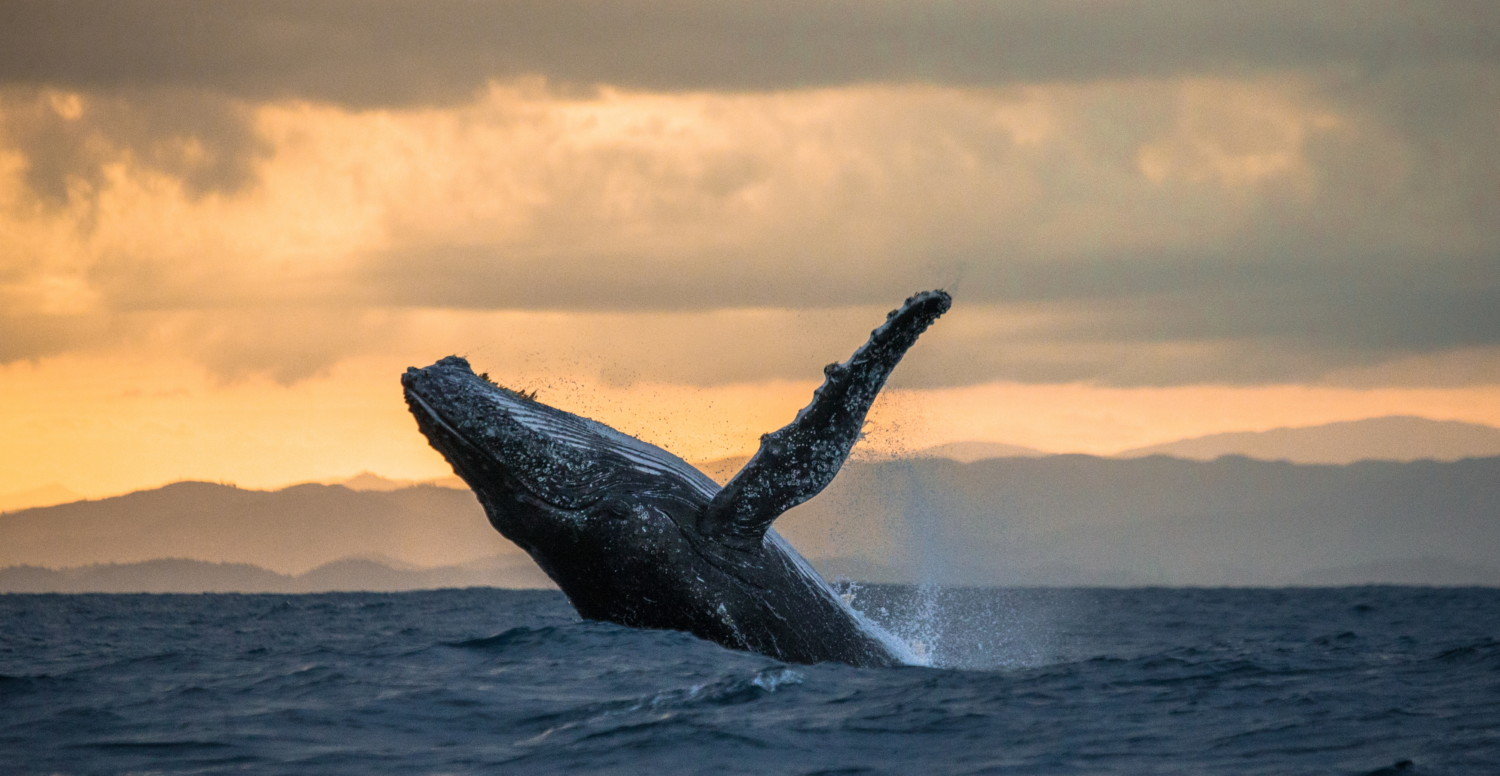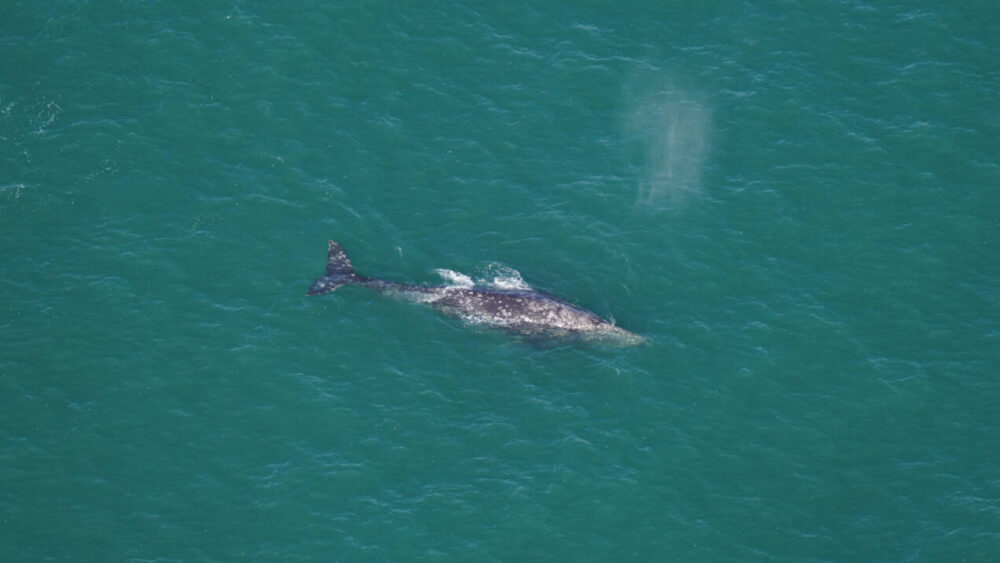Gray whale that lost its tail developed a unique way to swim

A gray whale that lost its tail has been spotted in California, revealing that despite its impairment, it is still managing to swim.
Calling it a “miracle whale,” Jessica Roame, the education manager for Newport Whales in Newport Beach, says the marine mammal was seen during its migration from Alaska to Mexico and back — a 12,000-mile round trip from feeding grounds to a whale breeding area — all without a tail fin, also known as a “fluke.”
MORE: Gray whale spotted in the Atlantic for first time in 200 years
“The whale is maybe a little underweight but not dramatically so,” Roame told California Fox affiliate KTVU. “As horrible as this injury is, it’s incredible that this whale is determined to survive, and so far appears to be successful.”
The whale was spotted swimming north near Newport Beach, California, at around 3 miles per hour. A typical whale moves at about 4 miles an hour during migration. Experts say the whale’s injury is estimated to be several years old and was likely caused by getting stuck in commercial fishing gear.
A drone operated by boat charter company Newport Coastal Adventure caught footage of the whale on March 13. Company owner Ryan Lawler told The Orange County Register the whale was swimming with just the use of its pectoral fins (which are located toward its head) while leaning hard to one side.
“It definitely had a unique swimming style because it had to compensate for not having a tail anymore,” Lawler said.
ABC7 Eyewitness News in California posted the video to Twitter.
A Newport Beach drone captured a "miracle whale" swimming without a tail during its 12,000-mile journey from Alaska to Mexico. 🐋🥺 https://t.co/LyluCA8bSD pic.twitter.com/wFiqkBkCga
— ABC7 Eyewitness News (@ABC7) March 29, 2023
There was another sighting of a tail-less whale in the same area in 2018, but it’s not clear if it’s the same one. Brooke Palmer, the photographer who spotted that whale, said it seemed to favor its right side after each breath.
“However, despite the impairment, this whale did seemingly well as it adapted to the loss of an integral limb,” she told The Mercury News. “After viewing the whale for a few sequences, I realized how resilient and adaptive they can be under unusual circumstances.”
Palmer posted a video of the whale she spotted in 2018 to YouTube, where the missing tail is clearly visible:
Alisa Schulman-Janiger, who runs the Gray Whale Census project, told The Mercury News that there have been several reports of flukeless whales over the years, including a female with calves, a gray whale observed in 2017, and another seen in 2015.
Gray whales undertake one of the longest migrations in the world. Since about 2014, Gray Whales Count has documented more than 4,000 gray whales yearly as they travel through the nearshore of the Santa Barbara Channel on their northbound migration between mid-February and the end of May.





